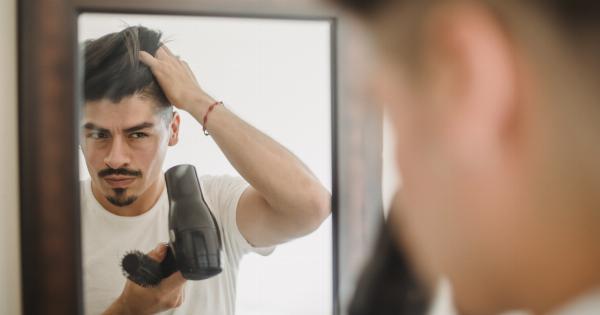Hair loss is a common phenomenon that affects both men and women, and is often associated with aging.
Although it can be distressing for some individuals, hair loss is a completely normal process and is a result of various factors, including genetic predisposition, hormonal changes, and lifestyle choices. This article aims to explore the normalcy of hair loss, debunk common myths, and provide insights into the causes, treatments, and coping mechanisms for this natural occurrence.
Understanding Hair Growth Cycle
Before delving into the details of hair loss, it is essential to understand the hair growth cycle. Hair growth occurs in three phases: anagen, catagen, and telogen.
The Anagen Phase
The anagen phase is known as the growth phase, during which the hair actively grows. On average, this phase lasts for around 2-7 years, and the length of this phase primarily determines the length of one’s hair.
The Catagen Phase
After the anagen phase, the hair enters the catagen phase, which is a transitional phase that lasts for approximately 10 days. During this phase, the hair follicle shrinks, detaching the hair shaft from the blood supply.
The Telogen Phase
The telogen phase, also known as the resting phase, is the final phase of the hair growth cycle. In this phase, hair follicles are at rest, and new hair begins to grow, pushing the old hair out.
This phase lasts around 3-4 months, with roughly 10-15% of the hair on the scalp being in the telogen phase at any given time.
Causes of Hair Loss
Hair loss can occur due to a variety of reasons. While some factors are beyond our control, others can be managed or treated. Below are some common causes of hair loss:.
Genetics
One of the primary causes of hair loss is genetics, specifically a hereditary condition known as androgenetic alopecia, or male/female pattern baldness.
This condition is caused by a combination of genetic and hormonal factors and can start as early as puberty.
Hormonal Changes
Hormonal changes, such as those experienced during pregnancy, childbirth, menopause, or thyroid disorders, can also contribute to hair loss. These changes affect the hair growth cycle and can result in temporary or permanent hair loss.
Medical Conditions and Treatments
Various medical conditions, such as alopecia areata (an autoimmune disorder), scalp infections, and certain medications (e.g., chemotherapy drugs), can lead to hair loss.
Treating the underlying medical condition is crucial in managing hair loss caused by these factors.
Nutritional Deficiencies
A lack of essential nutrients, such as iron, zinc, vitamin D, and protein, can impact hair growth and lead to hair loss. Ensuring a balanced diet rich in these nutrients is essential for maintaining healthy hair.
Stress and Lifestyle Choices
Excessive physical or emotional stress, as well as poor lifestyle choices like smoking and excessive alcohol consumption, can take a toll on hair health. Chronic stress can disrupt the hair growth cycle, leading to hair loss.
Debunking Common Hair Loss Myths
There are numerous myths surrounding hair loss that can cause unnecessary anxiety and confusion. Let’s debunk some of these myths:.
Myth 1: Wearing hats or helmets causes hair loss
There is no scientific evidence to suggest that wearing hats or helmets leads to hair loss. However, it is essential to maintain good scalp hygiene and avoid excessively tight headwear to prevent conditions like traction alopecia.
Myth 2: Hair loss is only a problem for men
While it is true that male pattern baldness is more prevalent, hair loss can affect both men and women. The causes and patterns may vary, but it is a concern that affects individuals of all genders.
Myth 3: Hair loss is always permanent
Not all types of hair loss are permanent. Some conditions, such as those caused by hormonal imbalances or nutritional deficiencies, can be reversed with appropriate treatment and lifestyle changes.
Myth 4: Only older people experience hair loss
While hair loss is more common as individuals age, it can occur at any age. Genetic factors, hormonal changes, and various medical conditions can lead to hair loss in younger individuals as well.
Treatments and Coping Mechanisms
Several treatments and coping mechanisms can help manage hair loss and promote hair growth:.
Medications
Medications, such as minoxidil (Rogaine) and finasteride (Propecia), can be prescribed to treat androgenetic alopecia. These medications work by stimulating hair growth and preventing further hair loss.
Hair Transplantation
Hair transplantation is a surgical procedure that involves moving hair follicles from one part of the body (donor site) to another (recipient site).
This treatment option is suitable for individuals with significant hair loss and can provide long-term results.
Scalp Micropigmentation
Scalp micropigmentation is a non-invasive procedure that involves tattooing tiny dots on the scalp to create an illusion of hair follicles.
It can be an effective solution for individuals seeking a fuller appearance or those with limited donor hair for transplantation.
Wigs and Hairpieces
Wearing wigs, hairpieces, or hair extensions can help individuals manage hair loss and boost their confidence. They offer a temporary solution while other treatment options are explored.
Acceptance and Emotional Support
It is essential to recognize that hair loss is a natural occurring process and does not define one’s beauty or worth.
Seeking support from friends, family, or support groups can provide emotional support and help individuals cope with the psychological impact of hair loss.
Maintaining a Healthy Lifestyle
Adopting a healthy lifestyle that includes a balanced diet, regular exercise, stress management, and proper hair care practices can contribute to overall hair health and minimize hair loss.
Conclusion
Hair loss is a normal occurrence that affects individuals of all genders and ages.
Understanding the hair growth cycle, debunking common myths, and recognizing the various causes of hair loss can help individuals navigate this natural process with confidence. While different treatment options are available, it is important to remember that hair loss does not diminish one’s beauty or worth.
Embracing acceptance and seeking emotional support are equally vital in coping with hair loss and maintaining overall well-being.






















